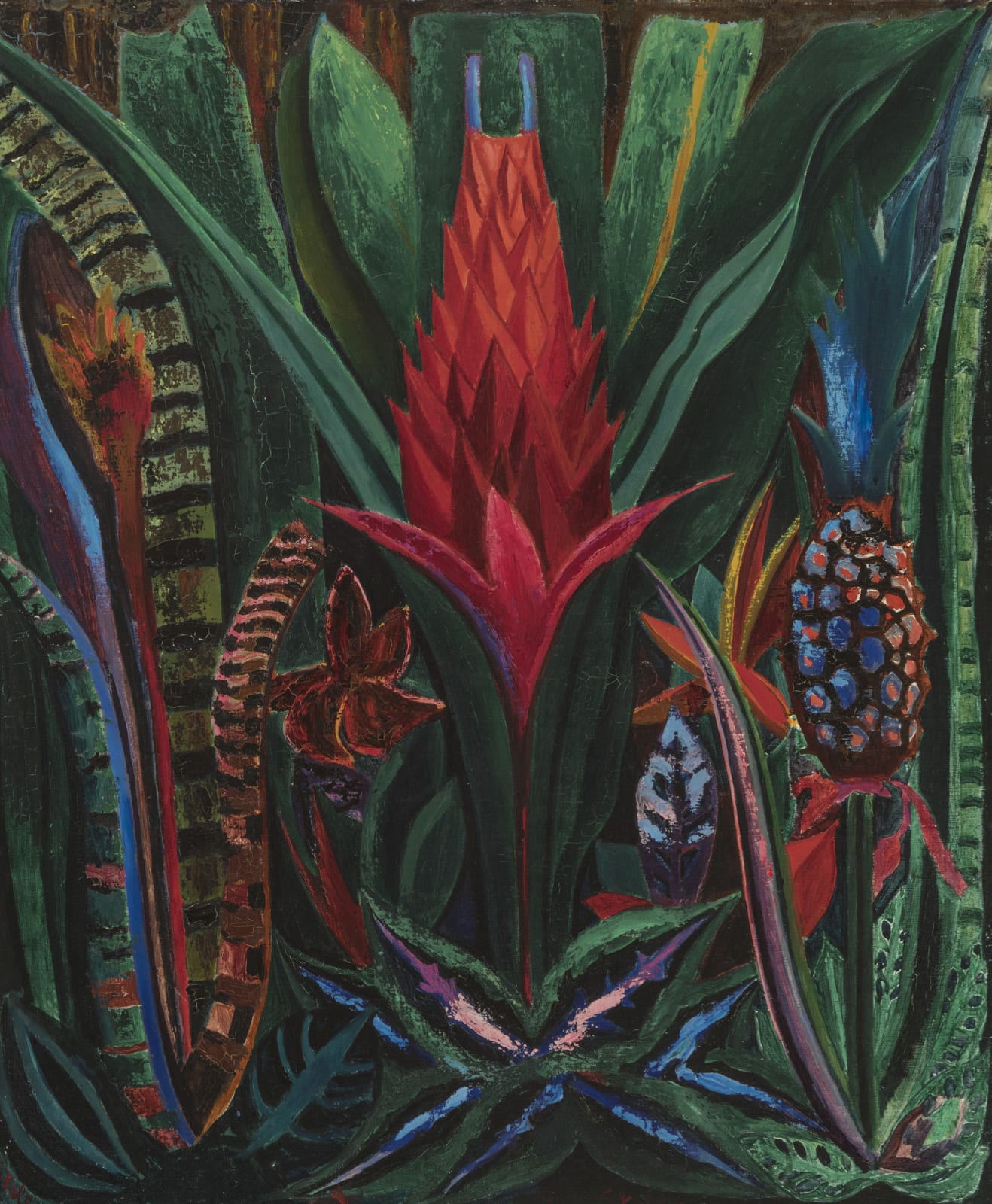Joseph Stella Italian, American, 1877-1946
Tropical Flower, 1920s
Signed at lower left: Stella; signed at lower center: Jos. Stella
Oil on canvas
25½ x 21½ inches
64.8 x 54.6 cm
64.8 x 54.6 cm
Joseph Stella’s the epic polyptych, New York Interpreted (The Voice of the City) (Newark Museum, New Jersey), linked the Italian-born artist to his adoptive home. He was nonetheless deeply rooted...
Joseph Stella’s the epic polyptych, New York Interpreted (The Voice of the City) (Newark Museum, New Jersey), linked the Italian-born artist to his adoptive home. He was nonetheless deeply rooted in his Italian identity, and he spent much of his career, beginning around 1920, brokering a truce between Modernist and Old World traditions. He explored a variety of avant-garde styles from Futurism to cubist collage, yet he continued his practice with archaic techniques like silverpoint and conte crayon throughout his career. With a voracious appetite for new ideas, Stella accumulated a vast lexicon of personal symbols and ciphers for encoding and expressing.
In 1920 he completed Tree of My Life (Ebsworth Collection), perhaps his most encyclopedic symbolist picture, a vast compendium of flowers, birds, and biomorphic architecture under a bright Flemish blue sky. While the urban paintings for which he was increasingly known were nocturnal and illumined by electric light, Tree of My Life began a parallel body of work, using flowers and birds as expressive tools in brighter settings.
The present work was completed in 1922, just after Tree of My Life and around the same time as the mammoth Voice of the City Interpreted. It is a perfect mediation between these two forces of day and night: the subject makes it putative kin to Tree of My Life, but it lacks the pastel palette or sunlit mottling of that work. The dense, dark pigment hint at relationship to Stella’s nocturnes; the jumping tones and cool pigments welcome the same urban dreamscape setting as The City Interpreted. Common to all three of these are the centrally-arranged composition, with roughly symmetrical vertical pendants on either side. The snake-like plants at the edges do double-duty, echoing the steely verticals of the Brooklyn Bridge while hewing the organic forms of Tree of My Life. The innocence suggested by the garden setting is complicated by the sense of uncanny menace in the work. The painting, with expressionist verve, embodies the ambivalent strains of Stella’s finest years.
In 1920 he completed Tree of My Life (Ebsworth Collection), perhaps his most encyclopedic symbolist picture, a vast compendium of flowers, birds, and biomorphic architecture under a bright Flemish blue sky. While the urban paintings for which he was increasingly known were nocturnal and illumined by electric light, Tree of My Life began a parallel body of work, using flowers and birds as expressive tools in brighter settings.
The present work was completed in 1922, just after Tree of My Life and around the same time as the mammoth Voice of the City Interpreted. It is a perfect mediation between these two forces of day and night: the subject makes it putative kin to Tree of My Life, but it lacks the pastel palette or sunlit mottling of that work. The dense, dark pigment hint at relationship to Stella’s nocturnes; the jumping tones and cool pigments welcome the same urban dreamscape setting as The City Interpreted. Common to all three of these are the centrally-arranged composition, with roughly symmetrical vertical pendants on either side. The snake-like plants at the edges do double-duty, echoing the steely verticals of the Brooklyn Bridge while hewing the organic forms of Tree of My Life. The innocence suggested by the garden setting is complicated by the sense of uncanny menace in the work. The painting, with expressionist verve, embodies the ambivalent strains of Stella’s finest years.
Provenance
The artist;Private collection, Florida;
By descent in the family until the present

